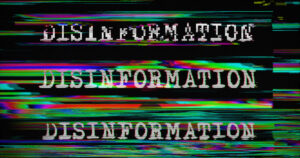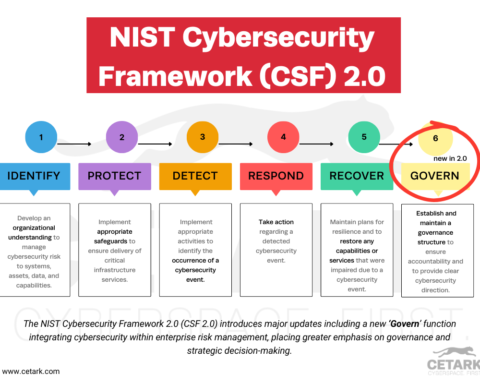In a world where technology dominates every aspect of our lives, the boundaries between peace and war are becoming increasingly blurred. This new battleground, known as the gray zone, has emerged as a hotbed for cyber operations, where adversaries can exploit vulnerabilities and wreak havoc without triggering an all-out conflict. Are we prepared for this new era of warfare? Let’s explore the complexities of cyberattacks in the gray zone, their implications, and how we can defend against this growing threat.
Key Takeaways
- Gray zone cyber operations are increasing due to geopolitical tensions and technological advances.
- Resilience, investments in advanced cybersecurity measures, understanding of emerging technologies, and international cooperation are essential for defending against such threats.
- Emerging technologies and evolving tactics necessitate a comprehensive approach to combat gray zone cyber warfare.
The Rise of Gray Zone Cyber Operations
The so-called gray zone is a realm where gray zone attacks, such as cyber operations, thrive, with gray zone activity between peace and war, such as cyber espionage and disinformation campaigns. These campaigns are designed to destabilize, weaken, or attack target states without escalating to armed conflict. Major players like Russia and China have been actively engaging in gray zone activities, leveraging “unrestricted warfare” and “three warfare” to blur the distinction between war and peace and achieve their national objectives without risking conventional escalation.
The challenges in responding to gray zone cyber operations are numerous, including striking a balance between the risk of premature escalation and that of recognizing conflict’s early stages too late. The advent of new technologies has enabled states to operate in a manner that is difficult to categorize, attribute, and detect, thus complicating the ability of the United States and its allies to respond.
With rising geopolitical tensions and evolving technology, we can anticipate a more prominent role for gray zone cyber operations in global conflicts.
Cyber Espionage
Cyber espionage is a critical component of gray zone cyber operations, involving the theft of sensitive information and intellectual property, often for strategic or economic advantage. Techniques employed in cyber espionage include phishing, malware, and social engineering, which are used to gain unauthorized access to sensitive information and systems. The potential impacts of gray zone cyberattacks, such as cyber espionage, can be far-reaching, causing economic losses, damage to reputation, and disruption of essential infrastructure.
Protection against potential gray zone cyber attacks requires countering these malicious activities with robust security protocols, comprehensive employee training, and vigilant network monitoring, safeguarding critical national infrastructure and sensitive information. As the complexity of cyber espionage campaigns continues to grow, governments, businesses, and individuals must remain vigilant and adopt proactive measures to defend against the threat.
Disinformation Campaigns
 Disinformation campaigns, another aspect of gray zone cyber operations, involve deliberately disseminating false or misleading information to manipulate public opinion and erode trust in institutions. These campaigns are organized attempts to deceive or manipulate the public, producing and distributing fabricated news articles, social media posts, and websites to enhance the believability of false information.
Disinformation campaigns, another aspect of gray zone cyber operations, involve deliberately disseminating false or misleading information to manipulate public opinion and erode trust in institutions. These campaigns are organized attempts to deceive or manipulate the public, producing and distributing fabricated news articles, social media posts, and websites to enhance the believability of false information.
Examples of disinformation campaigns include:
- Russia’s interference in the 2016 US presidential election
- China’s use of fake news to discredit the Hong Kong protests
- Iran’s employment of false information to discredit the US government.
A comprehensive approach incorporating public awareness, robust cybersecurity measures, and international cooperation is required to address these gray zone challenges.
Defending Against Gray Zone Cyber Threats
A multifaceted endeavor is required to defend against gray zone cyber threats, necessitating societal resilience through awareness and education and the pooling of resources and knowledge through public-private partnerships.Understanding emerging technologies is crucial in defending against gray zone cyber threats, as these technologies can introduce new attack vectors and increase the complexity of defense. Industry plays a vital role in safeguarding critical infrastructure and sensitive information, and their investment in research, development, and implementation of advanced cybersecurity measures is essential.
Agility is another critical component in responding to gray zone cyber threats, as it allows for adapting to the rapidly evolving threat landscape and responding effectively to new challenges. Organizations can better protect themselves from a wide array of potential attacks by leveraging a diverse range of capabilities from small and medium enterprises and niche specialisms of new tech start-ups.
Building Resilience
In facing gray zone cyber threats, building resilience involves raising public awareness of these challenges and fostering critical thinking skills to counter misinformation. Public awareness and critical thinking are essential to manage and overcome difficulties in gray zone cyber threats. Public awareness assists individuals in detecting and classifying potential threats, while critical thinking aids them in assessing and addressing those threats.
By raising awareness of current events and remaining cognizant of potential threats, individuals can become less vulnerable to gray zone conflict. Critical thinking is vital when evaluating information in addressing the complexities of gray zone cyber warfare and protecting oneself from potential harm.
Public-Private Partnerships
Public-private partnerships are cooperative arrangements between government agencies and private-sector companies to procure and implement public infrastructure and/or services. In defending against gray zone cyber threats, public-private partnerships can help distribute the burden of national cyber defense and leverage the necessary skills and technologies to counter these threats.
By pooling resources and knowledge, public-private partnerships can help create a more robust and resilient cybersecurity ecosystem, better equipped to protect critical infrastructure and sensitive information from gray zone cyberattacks.
Given the continuously evolving threat landscape, nurturing strong public-private partnerships becomes increasingly vital for maintaining robust defense against gray zone cyber threats.
Case Studies: Notable Gray Zone Cyber Incidents
Notable gray zone cyber incidents are a stark reminder of the potential consequences of this new form of warfare, with cases such as Russian interference in US elections and Chinese economic coercion demonstrating the far-reaching implications of these gray zone threats. Gray zone cyber incidents can disrupt essential infrastructure, theft of confidential information, and manipulation of public opinion without inciting a full-scale military response.
Examining these case studies can give valuable insights into the nature of gray zone cyber operations and the challenges that governments and private organizations face in their responses and defenses against these threats. As the gray zone continues to evolve, understanding the complexities of these incidents will be vital in preparing for and mitigating future threats.
Russian Interference in US Elections
Russian interference in US elections is a prime example of gray zone cyber operations involving hacking and disinformation campaigns to influence public opinion and undermine trust in democratic institutions. The methods employed in these operations, which include phishing, malware, and social engineering, have had significant consequences for the targeted entities and the broader international community, highlighting the growing concern about election interference.
The ramifications of Russian interference in US elections encompass influencing public opinion and eroding trust in democratic institutions. This case study highlights the importance of building resilience, fostering public-private partnerships, and establishing international norms to defend against the growing threat of gray zone cyber operations.
Chinese Economic Coercion
Chinese economic coercion is another notable gray zone cyber incident involving cyberattacks on foreign entities and governments to obtain economic benefit and exerting political influence. Tactics employed by China in this context include:
- Trade restrictions
- Economic sanctions
- Investment manipulation
- Market access denial
All are aimed at achieving strategic objectives in strategic and international studies.
Targeting critical infrastructure and civilian populations in gray zone cyber warfare can have grave consequences for national security, such as disruption of essential services, economic damage, and even the risk of a devastating cyber attack leading to loss of life.
This case study underscores the importance of comprehending the evolving nature of gray zone cyber warfare and the need for a comprehensive approach to defending against the myriad threats posed by these activities.
International Law and Gray Zone Cyber Conflict
International law plays a significant role in gray zone cyber conflict, as it seeks to establish norms and red lines for state behavior in cyberspace and address challenges related to enforcement and attribution. However, the lack of clear international laws and norms and the difficulty of attributing cyber operations to a particular actor make enforcement and attribution particularly challenging.
The continuing evolution of gray zone cyber operations necessitates the development of international laws and norms, which are vital to prevent a new kind of digital cold war. States engage in covert cyberattacks and disinformation campaigns in this scenario without triggering outright conflict. Establishing norms and red lines can help deter gray zone activities by clarifying what actions are considered unacceptable and may trigger a response.
Establishing Norms and Red Lines
Establishing norms and red lines involves:
- Defining acceptable behavior
- Setting boundaries within a specific context or domain
- Creating guidelines and standards for behavior
- Establishing expectations and consequences for any violations
In the context of gray zone cyber conflict, establishing norms and red lines can deter malicious activities by clarifying which actions are unacceptable and may result in a response.
Examples of norms and red lines include prohibiting cyber espionage, cyberattacks on critical infrastructure, and interference in the internal affairs of other states. As gray zone cyber operations continue to grow, establishing explicit norms and red lines will be essential in maintaining international stability and preventing escalation.
Enforcement and Attribution
Enforcement and attribution are essential components of addressing gray zone cyber conflict, as they allow for identifying and assigning responsibility to the individuals or entities behind a particular action or event and applying penalties or consequences.
However, the challenges of enforcement and attribution in gray zone cyber conflict are significant due to the difficulty in identifying and attributing cyberattacks to particular actors and the lack of established mechanisms for holding perpetrators accountable.
Without established mechanisms for holding perpetrators responsible, cybercriminals are likelier to persist in their malicious activities without fear of repercussions. Addressing the challenges of enforcement and attribution in gray zone cyber conflict is crucial in creating a more secure and stable environment, enabling states to more accurately anticipate and respond to potential threats.
The Future of Gray Zone Cyber Warfare
The future of gray zone cyber warfare will be shaped by emerging technologies and evolving tactics, which may increase cyberattacks’ complexity and potential impact. As new technologies are developed and integrated into the cyber domain, the gray zone cyber warfare landscape will continue to evolve, enabling more refined and targeted attacks and the capacity to launch attacks from multiple sources concurrently.
As a result, the need for a comprehensive approach to defending against gray zone cyber threats becomes ever more critical. This includes:
- Building societal resilience
- Fostering public-private partnerships
- Establishing international norms and red lines
- Addressing the challenges of enforcement and attribution.
By staying ahead of evolving tactics and emerging technologies, we can better prepare for and mitigate the dangers of gray zone cyber warfare.
Emerging Technologies
Emerging technologies, such as artificial intelligence, quantum computing, and advanced analytics, have the potential to influence the future of gray zone cyber warfare significantly. These technologies will enable more sophisticated and targeted cyberattacks and the ability to launch attacks from multiple sources simultaneously, increasing the complexity of defense.
With these technologies’ ongoing evolution and increasing ubiquity, governments, businesses, and individuals must maintain vigilance and proactivity in their defense against gray zone cyber threats. Understanding and adapting to the implications of emerging technologies will be key to maintaining a robust and resilient defense against this growing threat.
Evolving Tactics
Evolving tactics in gray zone cyber warfare include:
- Increased use of proxies and non-state actors
- Targeting of critical infrastructure and civilian populations
- Use of deception, manipulation, and disinformation campaigns
These tactics further complicate the defense against these threats. They allow state actors to achieve their strategic objectives while maintaining plausible deniability.
Given the ongoing evolution of gray zone cyber warfare tactics, governments and organizations must adjust their defenses in response. This includes staying informed of current trends, investing in research and development, and fostering international cooperation to effectively combat the growing threat of gray zone cyber warfare.
Summary
In conclusion, gray zone cyber operations present a complex and evolving challenge in cybersecurity. As these operations continue to shape the landscape of international relations and warfare, governments, businesses, and individuals must adapt and strengthen their defenses. By building societal resilience, fostering public-private partnerships, establishing international norms and red lines, and addressing the challenges of enforcement and attribution, we can better prepare for and mitigate the dangers posed by this new era of warfare. The future may be uncertain, but we can ensure a safer and more stable world through vigilance and cooperation.
Frequently Asked Questions
What is the GREY zone in cyber attacks?
The Grey Zone in cyber attacks is a space of uncertainty and deniability where actors use hybrid strategies to extend their influence, blurring the boundaries between peaceful state rivalries and war.
What are the four types of cyber attacks we have looked at?
The four main types of cyber attacks are malware, phishing, man-in-the-middle attacks, and SQL injection. Other common forms of attack include Denial-of-Service (DoS) attacks, spoofing, identity-based attacks, code injection, supply chain attacks, and insider threats.
What is the largest cyber attack on US critical infrastructure?
Colonial Pipeline, the largest fuel pipeline in the United States, experienced the most egregious cyberattack against critical infrastructure in U.S. history when it was forced to shut down all operations for almost a week in May 2021.
What are the main tactics employed in gray zone cyber operations?
Gray zone cyber operations employ cyber espionage, disinformation campaigns, and using proxies and non-state actors to carry out malicious activities.
How can governments and organizations defend against gray zone cyber threats?
Governments and organizations can defend against gray zone cyber threats by building public awareness, forming public-private partnerships, and creating international norms for state behavior online.







